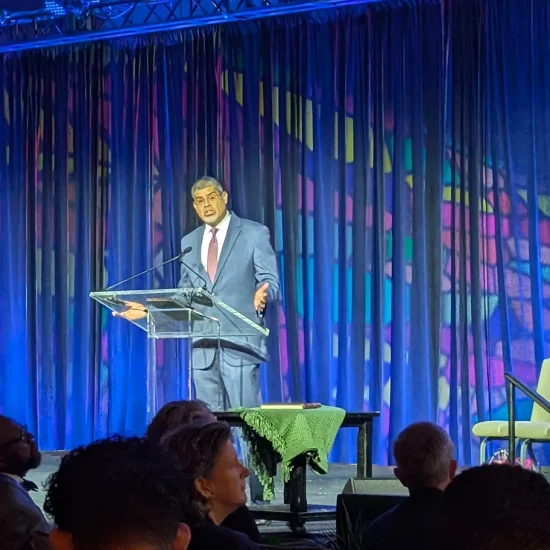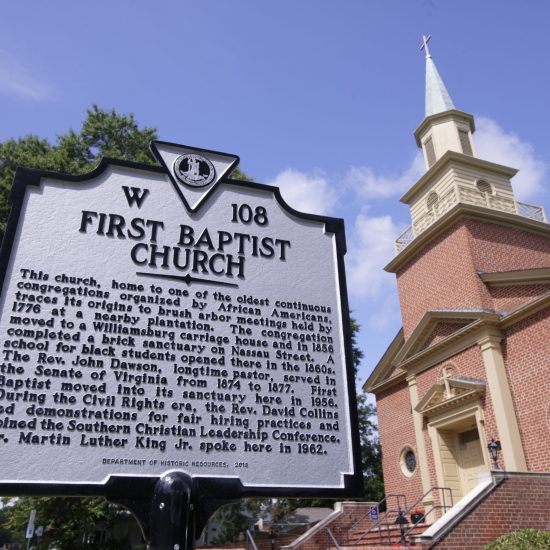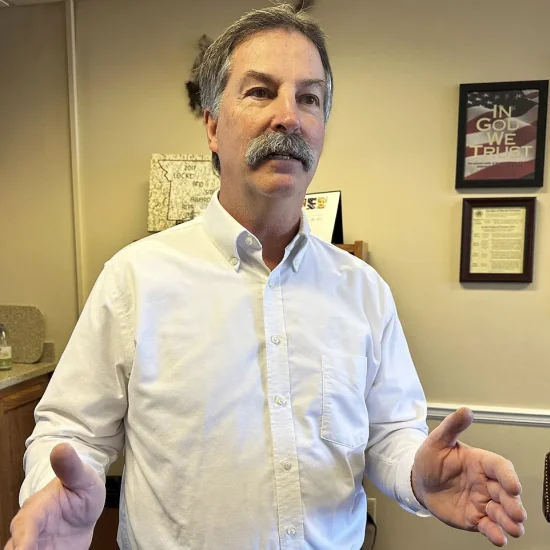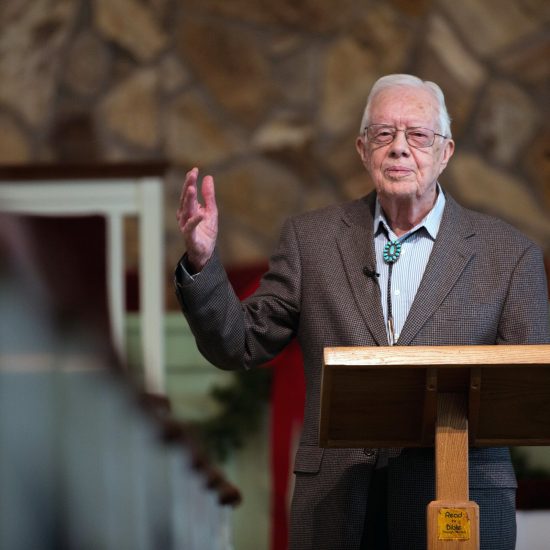(ABP) — Institutionally and organizationally, American Protestantism is in a state of permanent transition — and the Southern Baptist Convention is no exception.
These days it is clear that fewer religious Americans think of their primary identity in terms of a denomination. Once the primary way of organizing Protestant communions in the United States, denominations now are only one of multiple options along with independent churches, megachurches, emergent churches and a variety of non-denominational, interchurch coalitions.
In a sense, the SBC reflects one of the most elaborate denominational systems ever created, with connections linking local churches, regional associations, state conventions and national networks. Yet for the last several years many Southern Baptist leaders have expressed increasing concern about the state of the convention as indicated by transitions in demographics, evangelism and overall denominational identity. These include:
- Statistical declines or plateaus in the number of annual baptisms reported by SBC member churches.
- Declining contributions to denominational programs and agencies.
- A continuing increase in the age of the average SBC church member (now calculated to be in the mid- to-late 50s).
- Studies indicating that the majority of SBC churches are declining or stagnant in membership and baptisms. One recent study suggests that only 11 percent of SBC churches are growing through evangelization of unchurched persons rather than simply transfer of members from other churches.
- A growing number of churches that have dropped or minimized the name “Baptist” in their promotional materials or overall identity.
- A tendency of many churches to shop around for educational and promotional literature beyond the traditional denominational materials and publications.
- A steady decline in the number of churches that utilize traditional methods of evangelism — revivals, professional evangelists, direct evangelistic techniques — as means of reaching the unchurched.
- An expanding localism by which members strongly identify with their specific congregation but are less identified with more extended denominational alliances. Their Baptist identity, if it exists at all, is connected to a local church rather than an extended denominational history or identity. When transferring membership, they are apt to look for a particular type of congregation before they consider its denominational label.
These trends and their impact on the denomination were on the minds of some 7,000 SBC “messengers” at the group’s annual meeting in Orlando, Fla., in June. A majority of those representing SBC churches voted to accept a report from a task force that, among other things, extends options for collective giving beyond the denomination’s Cooperative Program, the chief denominational funding mechanism since 1925.
Member churches will now be permitted more options for contributing to denominational support by directing their monies to selected agencies rather than to the entire convention system. Although the Great Commission Resurgence Task Force’s report passed by a large majority, many voiced concern that it would contribute to a breakup of old ways of connecting and funding a wide range of convention-based ministries and cooperative efforts.
In short, Southern Baptists know that changes need to be made, but cannot seem to agree on what those changes might be and how they will affect declines in denominational support and identity.
How a superdenomination grew
Founded in 1845 after a break with Northern Baptists in disputes centered largely in slavery, the SBC became America’s largest Protestant denomination through aggressive evangelistic techniques and an elaborate system of denominational programs that linked grass-roots constituencies in local, national and international cooperation.
The denominational system endured for over a century and a half, and was a primary vehicle for passing on Baptist identity to multiple generations. It also provided opportunities for national and global ministry that single congregations could not maintain in and of themselves. These collective ministries included home and foreign missions, education (Baptist colleges and seminaries), and publication (books, periodicals and church-related literature).
In 1925 — the same year that the SBC adopted its first confession of faith — the organization also approved its first major collective funding plan. The Cooperative Program was a system for channeling money contributed by local churches and state conventions to denominational programs and agencies.
Southern Baptists’ aggressive evangelism, especially evident in personal witnessing and seasonal revival meetings, brought large numbers of persons into SBC churches throughout the 20th century. These evangelistic efforts, often held seasonally for one to two weeks at a time, seem no longer viable for the schedules of Baptist church members. As churches move away from revivals as the means for annual evangelistic campaigns, many are unclear as how to extend their evangelistic outreach in other ways.
Long-term struggles between conservatives and moderates ended in the departure of a relatively small but vocal group of churches, many of which had been intricately involved in denominational life for generations. The controversy lasted throughout the 1980s and 90s, contributing to significant changes at every level of SBC life. The conservatives won and secured what they called a “course correction,” rescuing the convention from a drift to the theological left. Many state Baptist conventions were factionalized, and numerous Baptist colleges, children’s homes and hospitals distanced themselves from their parent Baptist bodies.
The megachurch effect
The rise of the megachurch has had significant effects on Baptist identity and practice. Such massive congregations are usually guided by a central pastoral figure/CEO and offer specialized ministry to target groups — youth, single adults, children — organized around intentional marketing techniques.
In a sense, megachurches are mini-denominations, offering in one congregation many of the services and ministry opportunities that were previously offered through the SBC. These include increased emphasis on missionaries sent directly from the local congregation, rather than a mission board; the publishing or downloading of educational materials; and, in many cases, founding their own schools.
The emphasis on ministry through the local congregation means that an increasing number of churches, whether “mega” or not, are keeping more of their money at home, directing it through church-based ministries rather than through national and regional channels.
Megachurches are not the only ecclesiastical model operating in SBC life. Others include:
- Traditional SBC churches that continue to follow denominational programs and practices established in earlier eras. While some of them continue to experience growth and expand programs, many are facing serious declines in membership and have difficulty attracting younger members.
- Newer congregations that are developing a variety of methods for establishing identity. Membership in these churches varies in size, worship style and denominational involvement. Some receive initial denominational funding but must become self-supporting rather quickly.
- Churches that have developed a more “blended” approach to church and denominational life, mixing traditional SBC orientation with more contemporary approaches to worship, evangelism and ministry. This often leads them to pick and choose which denominational programs are best suited to their particular needs rather than engaging the entire denominational system.
- A significant number of SBC churches that shape their ministry and denominational engagement around specific theological and doctrinal identities. While most SBC churches would fall into the evangelical camp in American Protestant life, their particular approaches to those conservative views vary considerably. Some SBC churches identify themselves as Calvinist or Reformed in their theological understanding of the nature of the church and salvation, election and predestination. Others maintain a decidedly Charismatic approach.
Public perception of SBC
Perhaps the greatest challenge confronting the SBC is its own public image amid these changing times. As secularism, religious pluralism and declining numbers have become more common — even in areas once dominated by SBC churches — Southern Baptists face the loss of their previous cultural privilege and majority status in communities large and small.
In many regions Southern Baptists now compete with non-denominational churches, many of which reflect a more Pentecostal or Charismatic orientation. The growth of non-Christian religious groups has awakened Southern communities to the presence of Buddhists, Muslims, Hindus, Sikhs, and Jews in ways that impact public prayer, religious holy days, intermarriage and the de facto Baptist dominance in the public square.
Years of controversy inside the SBC have also brought denominational debates into the public arena. While the lengthy struggles between conservatives and moderates dominated the media narrative about Southern Baptists for more than a decade, the denomination has also received attention in recent years for its responses to issues related to sexuality, women in ministry, other world religions, the public schools, abortion, biblical inerrancy and Republican politics. The conservatives are thoroughly in charge of the denomination, but recently have been challenged by a new generation of Internet-fueled and reform-minded Southern Baptist activists, who resist denominational attitudes and practices they view as too doctrinally or denominationally conformist. Some suggest that the SBC often sounds harsh and distant to those who are hurting and struggling with life.
Thus Southern Baptist leaders confront the fact that what seems to them and their churches like mere doctrinal or ethical conviction may appear to the larger, more secular culture as bigotry. In short, the great dilemma currently facing Southern Baptists is whether they wish to be a sectarian minority with clear doctrinal boundaries that set their churches apart in the religious marketplace, or if they wish to once again be a culturally dominant majority religion concerned with mass evangelism and greater theological latitude.
Southern Baptists remain the largest Protestant denomination in America. Their seminaries are thriving and they continue to dominate large segments of the evangelical landscape. Nonetheless, their efforts to adapt denominational systems to the changing realities of American life and Baptist identity provide a fascinating illustration of the cultural challenges confronting all 21st-century religious communions.
-30-
Bill J. Leonard recently retired as founding dean of the Wake Forest University School of Divinity. He remains a professor of church history at the school. This analysis is adapted from one originally written for The Baptist Times, the newspaper of the Baptist Union of Great Britain.
Previous ABP stories:
Analysis: United in theology, Southern Baptists differ on methodology (6/22/2010)
SBC overwhelmingly approves 'Great Commission Resurgence' report (6/15/2010)
SBC exec Chapman criticizes task force's recommendations (6/8/2010)






